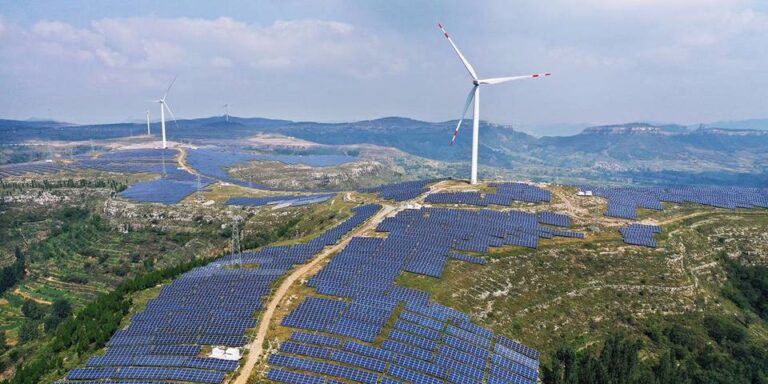Could the era of cheap oil supply be gone for good?
That’s the conclusion of some of the biggest commodities desks on Wall Street, where banks have been lifting their long-term price forecasts, often by $10 or more.
While the US shale boom brought about a “lower-for-longer” mantra, the market is now fixated on climate change and the dwindling appetite to invest in fossil fuels. Instead of growing supply, companies are under pressure to limit their spending, causing a structural under-investment in new production that — the argument goes — will keep oil prices higher for longer.
“My advice to clients is that you want to stay long oil until you know where that equilibrium price is” that brings new supplies online, said Jeff Currie, head of commodities research at Goldman Sachs Group Inc. “We know it’s above these levels because we haven’t had a big uptick in capex and investment.”
The notion of a supply gap is nothing new. Since prices crashed in 2014, analysts have talked up the potential for demand to outstrip production as a result of underinvestment. But the rout in energy prices from Covid-19, combined with pressing environmental concerns, offer reason to think this time is different.
The number of oil and gas drilling rigs globally may have recovered from the lows of when oil prices turned negative last year, but they are still down more than 30% on the start of 2020. Current figures are about as low as they were in 2016, according to Baker Hughes Co., despite headline crude prices being near a seven-year high.
Future View
Among the banks seeing higher prices for longer, Goldman says $85 for 2023. Morgan Stanley bumped what it calls its long-term forecast up by $10 to $70 this week, while BNP Paribas sees crude at almost $80 in 2023. Other banks including RBC Capital Markets have talked up the prospect of oil being at the start of a structural bull run.
Such estimates imply that a commodity vital to the global economy has become structurally more expensive. Oil price expectations underpin hundreds of billions of dollars of equity valuations for major international oil companies like Royal Dutch Shell Plc and BP Plc.
There’s an ever-dwindling appetite to lend on the part of investors too. In the last week alone, the largest French banks said they would curb the financing of the shale oil and gas industry from early next year. Ecuador recently had to double the amount of banks that could provide it with credit guarantees as financial institutions shunned crude harvested from the Amazon.
Unsustainable
Not everyone supports the idea that prices can be stay at elevated levels. Citigroup Inc. said in a report this month that crude below $30 and above $60 looks unsustainable in the long-term. A prolonged price above $50 could add 7 million barrels a day of extra supply, the bank’s analysts including Ed Morse wrote in a note.
“Mid-term, cost indicators keep pointing to a fair-value range between $40-$55 a barrel,” they said.
But others see a tide that’s turning, especially given changes in the U.S., which has effectively become a swing producer in recent years.
On one front, publicly listed U.S. shale companies remain constrained in growing production. When EOG Resources Inc. said in February that it planned to grow output its shares fell the most of any company on the S&P 500. There have been few, if any, similar comments from producers since.
Alongside that, the impact of field declines is growing clearer. In November, the Permian Basin was the only onshore U.S. field to show meaningful year-on-year production growth. All others were either flat or down, according to an Energy Information Administration report.
Similarly, while some of the key OPEC+ producers find themselves with spare capacity that they can dip into next year, others including Nigeria and Angola are already showing signs of struggling to lift production further.
“People have become very comfortable with the idea that shale will be there and we’re not resource constrained,” said David Martin, head of commodities desk strategy at BNP Paribas. “That’s a question mark in my mind.”
And in a world spending less money on fossil fuels, questions then turn to demand, which doesn’t look like peaking any time soon.
The International Energy Agency said earlier this month that spending on fossil fuels is lower than needed if current demand growth continues. It only sees oil demand starting to decline in the 2030s under current policies. However, Morgan Stanley estimates that supply could stop expanding by 2025, leaving a sizable gap.
“We are running at net-zero type capex levels, whilst at the same time demand is not following the net-zero trajectory,” said Martijn Rats, an oil strategist at the bank. “Demand will be above 100 million barrels a day for the rest of the 2020s, but on the supply side we’re not going to produce that with current investment levels.”
This story has been published from a wire agency feed without modifications to the text.









DENVER – For decades, we at the Rocky Mountain Institute (now RMI) have argued that the transition to clean energy will cost less and proceed faster than governments, firms, and many analysts expect. In recent years, this outlook has been fully vindicated: costs of renewables have consistently fallen faster than expected, while deployment has proceeded more rapidly than predicted, thereby reducing costs even further.
Thanks to this virtuous cycle, renewables have broken through. And now, new analyses from two authoritative research institutions have added to the mountain of data showing that a rapid clean-energy transition is the least expensive path forward.
Policymakers, business leaders, and financial institutions urgently need to consider the promising implications of this development. With the United Nations Climate Change Conference (COP26) in Glasgow fast approaching, it is imperative that world leaders recognize that achieving the Paris climate agreement’s 1.5° Celsius warming target is not about making sacrifices; it is about seizing opportunities. The negotiation process must be reframed so that it is less about burden-sharing and more about a lucrative race to deploy cleaner, cheaper energy technologies.
With the world already suffering from climate-driven extreme weather events, a rapid clean-energy transition also has the virtue of being the safest route ahead. If we fail at this historic task, we risk not only wasting trillions of dollars but also pushing civilization further down a dangerous and potentially catastrophic path of climate change.
One can only guess why forecasters have, for decades, underestimated the falling costs and accelerating pace of deployment for renewables. But the results are clear: bad predictions have underwritten trillions of dollars of investment in energy infrastructure that is not only more expensive but also more damaging to human society and all life on the planet.
We now face what may be our last chance to correct for decades of missed opportunities. Either we will continue to waste trillions more on a system that is killing us, or we will move rapidly to the cheaper, cleaner, more advanced energy solutions of the future.
New studies have shed light on how a rapid clean-energy transition would work. In the International Renewable Energy Agency (IRENA) report The Renewable Spring, lead author Kingsmill Bond shows that renewables are following the same exponential growth curve as past technology revolutions, hewing to predictable and well-understood patterns.
Accordingly, Bond notes that the energy transition will continue to attract capital and build its own momentum. But this process can and should be supported to ensure that it proceeds as quickly as possible. Policymakers who want to drive change must create an enabling environment for the optimal flow of capital. Bond clearly lays out the sequence of steps that this process entails.
Examining past energy revolutions reveals several important insights. First, capital is attracted to technological disruptions, and tends to flow to the areas of growth and opportunity associated with the start of these revolutions. As a result, once a new set of technologies passes its gestation period, capital becomes widely available. Second, financial markets draw forward change. As capital moves, it speeds up the process of change by allocating new capital to growth industries, and by withdrawing it from those in decline.
The current signals from financial markets show that we are in the first phase of a predictable energy transition, with spectacular outperformance by new energy sectors and the de-rating of the fossil-fuel sector. This is the point where wise policymakers can step in to establish the necessary institutional framework to accelerate the energy transition and realize the economic benefits of building local clean-energy supply chains. As we can see from market trends highlighted in the IRENA report, the shift is already well underway.
Reinforcing the findings from the IRENA report, a recent analysis from the Institute for New Economic Thinking (INET) at the Oxford Martin School shows that a rapid transition to clean energy solutions will save trillions of dollars, in addition to keeping the world aligned with the Paris agreement’s 1.5°C goal. A slower deployment path would be financially costlier than a faster one and would incur significantly higher climate costs from avoidable disasters and deteriorating living conditions.
Owing to the power of exponential growth, an accelerated path for renewables is eminently achievable. The INET Oxford report finds that if the deployment of solar, wind, batteries, and hydrogen electrolyzers continues to follow exponential growth trends for another decade, the world will be on track to achieve net-zero-emissions energy generation within 25 years.
In its own coverage of the report, Bloomberg News suggests as a “conservative estimate” that a rapid clean-energy transition would save $26 trillion compared with continuing with today’s energy system. After all, the more solar and wind power we build, the greater the price reductions for those technologies.
Moreover, in his own response to the INET Oxford study, Bill McKibben of 350.org points out that the cost of fossil fuels will not fall, and that any technological learning curve advantage for oil and gas will be offset by the fact that the world’s easy-access reserves have already been exploited. Hence, he warns that precisely because solar and wind will save consumers money, the fossil-fuel industry will continue to try to slow down the transition in order to mitigate its own losses.
We must not allow any further delay. As we approach COP26, it is essential that world leaders understand that we already have cleaner, cheaper energy solutions ready to deploy now. Hitting our 1.5°C target is not about making sacrifices; it is about seizing opportunities. If we get to work now, we can save trillions of dollars and avert the climate devastation that otherwise will be visited upon our children and grandchildren.